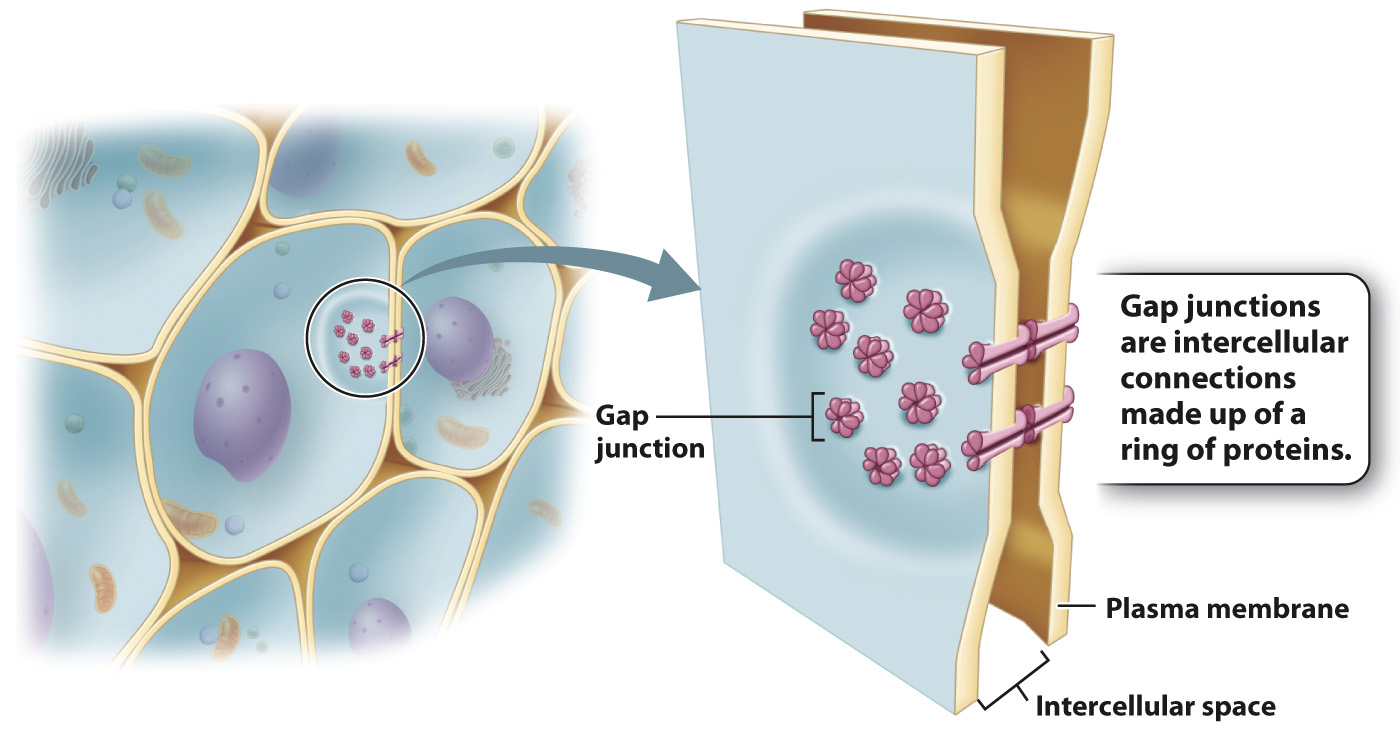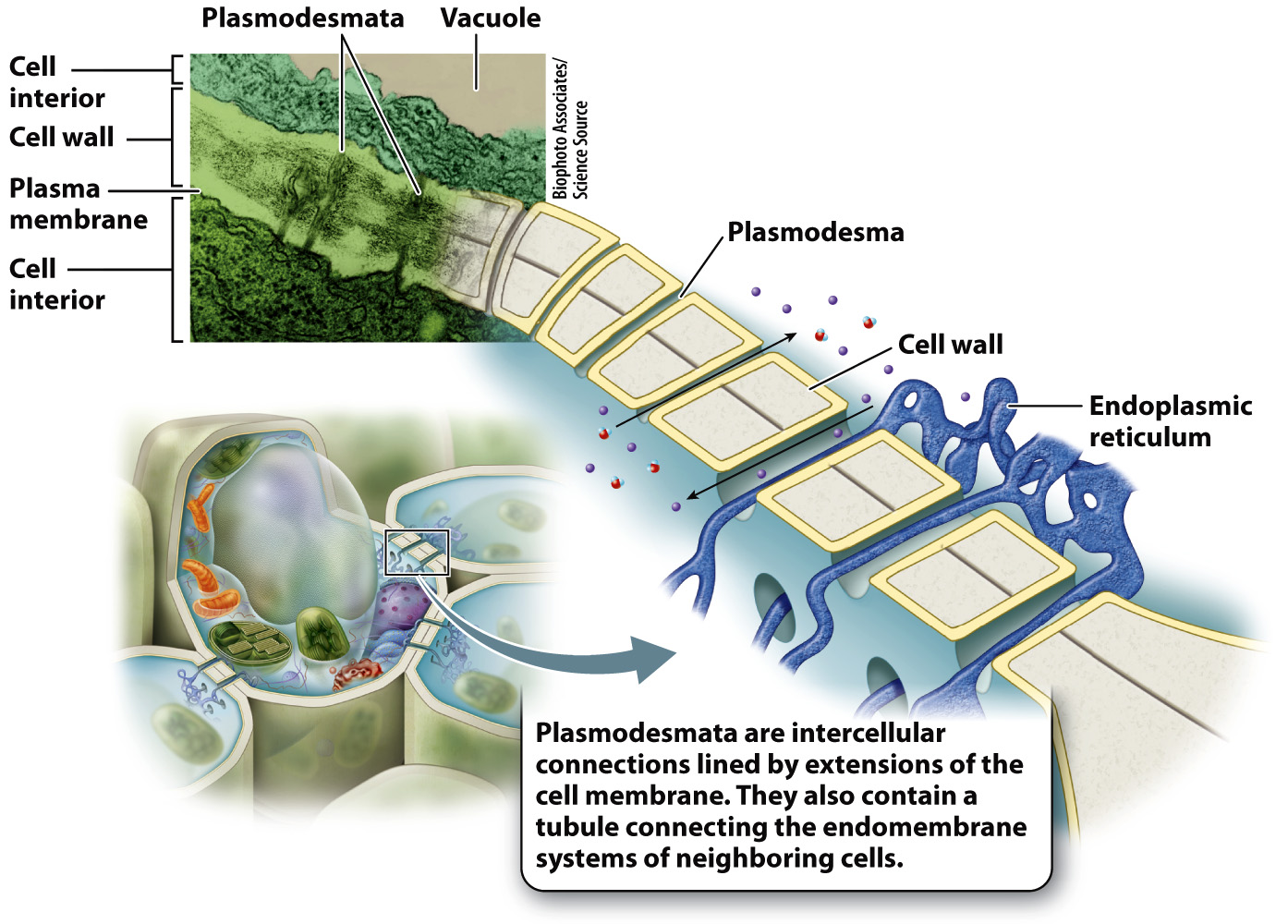Complex multicellularity requires communication between cells.
In complex multicellular organisms, it is not sufficient for cells to adhere to one another. They must also be able to communicate. Communication is important during development, guiding the patterns of gene expression that differentiate cells, tissues, and organs. The functional integration of cells within tissues and tissues within organs also depends on the flow of information among cells.
As discussed in Chapter 9, cells communicate by molecular signals. A signaling molecule (generally a protein) synthesized by one cell binds with a receptor protein on the surface of a second cell, essentially flipping a molecular switch that activates or represses gene expression in the receptor cell’s nucleus. Plants and animals both have receptors of the receptor kinase type, and these initiate similar signaling pathways within the cell. As in the case of adhesion molecules, these signaling pathways, or components of the pathways, have also been identified in their close protistan relatives. Evidently, many of the signaling pathways used for communication between cells in complex multicellular organisms first evolved in single-
All cells have transmembrane receptors that respond to signals from the environment. In some cases, the signal is a molecule released by a food organism (such as the bacteria that induce simple multicellularity in choanoflagellates), and in some cases the cells sense nutrients, temperature, or oxygen level. Single-
While all eukaryotic cells have molecular mechanisms for communication between cells, complex multicellular organisms have distinct cellular pathways for the movement of molecules from one cell to another. For example, animals more complex than sponges have gap junctions, protein channels that allow ions and signaling molecules to move from one cell into another (Fig. 28.8). Gap junctions not only help cells to communicate with their neighbors, they allow targeted communication between a cell and specific cells adjacent to it (Chapter 10).

Plants, in contrast, have an intrinsic barrier to intercellular communication: the cell wall. Careful observation of plant cell walls with the electron microscope reveals that these walls have tiny holes through which thin strands of cytoplasm extend from one cell to the next (Fig. 28.9). Called plasmodesmata, these intercellular channels are lined by extensions of the cell membrane (Chapter 10). Tubules running through these channels connect the endomembrane systems of the two cells. Like gap junctions, plasmodesmata permit signaling molecules to pass between cells in such a way that they can be targeted to only one or a few adjacent cells.

Complex red and brown algae also have plasmodesmata, and complex fungi have pores between cells that enable communication by means of cytoplasmic flow. As similar channels do not occur in most other eukaryotic organisms, they appear to represent an important step in the evolution of complex multicellularity.